New Products
-
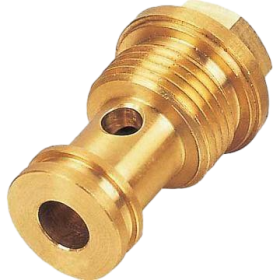
Custom Turn-Mill Combination brass parts
-
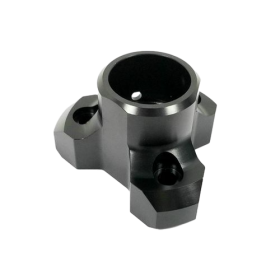
Custom Turn-Mill Combination parts
-
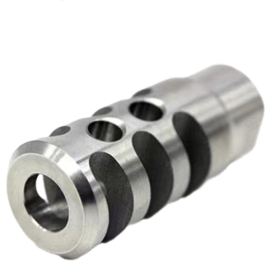
Precision CNC Turning Parts Stainless Steel shaft accessories
-
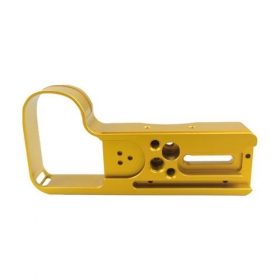
Precision CNC Custom Made Colorful Anodized Aluminum milling parts
-
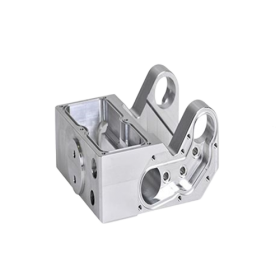
Custom CNC Milling Automated Machinery and Equipment Parts
-
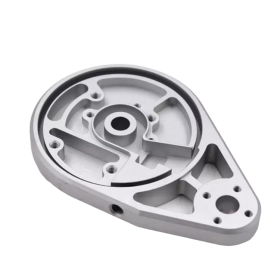
OEM/ODM Custom High Precision Metal CNC Machining/Milling/Turning Service CNC Turning Part
Hard Anodizing for Aluminum: A Comprehensive Guide
In the world of aluminum surface treatments, hard anodizing stands out as a highly effective process that significantly enhances the properties of aluminum components. This article will explore the definition of hard anodizing, its differences from regular anodizing, applications across various industries, benefits, and limitations.
Definition of Hard Anodizing
Hard anodizing is an electrochemical process specifically designed for aluminum and its alloys. During this process, the aluminum workpiece is placed in an electrolytic bath, typically containing sulfuric acid. An electric current is passed through the bath, causing oxygen to be released at the surface of the aluminum. This oxygen reacts with the aluminum to form a thick, hard, and porous oxide layer. The resulting oxide layer is much thicker and denser compared to that formed in regular anodizing, typically ranging from 25 to 250 micrometers.
Difference from Regular Anodizing
1. Coating Thickness
Regular anodizing usually produces an oxide layer that is relatively thin, typically in the range of 5 to 25 micrometers. In contrast, hard anodizing creates a much thicker layer, as mentioned above, which can be up to ten times thicker in some cases. This greater thickness contributes to enhanced performance in areas such as wear resistance.
2. Hardness
The oxide layer formed in hard anodizing is extremely hard. It can reach a hardness level of up to 500 - 600 HV (Vickers Hardness), which is significantly harder than the aluminum substrate itself. Regular anodized coatings are not as hard, with a hardness typically around 100 - 200 HV. This makes hard anodized aluminum much more suitable for applications where abrasion resistance is crucial.
3. Porosity
Hard anodized coatings have a higher porosity compared to regular anodized coatings. This porosity can be both an advantage and a challenge. On one hand, it allows for better adhesion of lubricants or other post - treatment coatings. On the other hand, it may require additional sealing processes to prevent corrosion in some environments. Regular anodized coatings have a relatively lower porosity and are often more corrosion - resistant in their as - formed state without additional sealing in many common environments.
4. Color and Aesthetic Appeal
Regular anodizing is more commonly used when a wide range of colors and a more aesthetically pleasing finish are desired. It can be easily dyed in various colors, creating an attractive appearance. Hard anodizing, due to its thicker and more porous nature, is more difficult to dye uniformly. The natural color of a hard anodized surface is usually a dull gray or black, which may not be as aesthetically appealing in applications where appearance is a primary concern.
Industry of Application
1. Aerospace Industry
Hard anodized aluminum is extensively used in the aerospace industry. Components such as landing gear parts, engine components, and structural elements benefit from the high wear and corrosion resistance provided by hard anodizing. For example, landing gear components are constantly subjected to high mechanical stress and harsh environmental conditions during take - off and landing. The hard anodized coating helps to protect these components, increasing their lifespan and ensuring the safety and reliability of the aircraft.
2. Automotive Industry
In the automotive sector, hard anodizing is used for parts like engine blocks, piston heads, cylinders, gears and brake components. Engine blocks made of hard anodized aluminum can withstand the high temperatures and pressures within the engine, reducing wear and improving the overall efficiency of the engine. Brake components benefit from the excellent abrasion resistance of hard anodized coatings, ensuring consistent braking performance over time.
3. Electronics Industry
Aluminum enclosures for electronic devices(such as laptops and smartphones) are often hard anodized. The hard anodized coating provides protection against scratches and corrosion, which is important as electronic devices are frequently handled and may be exposed to various environmental factors. Additionally, the hard anodized surface can act as an electrical insulator, adding an extra layer of safety in electronic applications.
4. Marine Industry
Marine environments are highly corrosive due to the presence of saltwater. Hard anodized aluminum is used for boat hulls, cleats, propellers, mast fittings and other marine components. The corrosion - resistant properties of hard anodized coatings protect these components from the harsh marine environment, reducing maintenance costs and extending the lifespan of the equipment.
5. Architectural Industry
Hard coat anodized aluminum is used extensively in the construction industry for window frames, railings, and structural facades. The process imparts weather resistance and preserves the aesthetics, reducing maintenance costs.
6. Industrial Industry
For machinery and equipment, hard coat anodizing is essential to extend service life and minimize downtime. Examples include hydraulic cylinders, air compressor pistons, and molds for plastic injection machines, all of which greatly benefit from the high wear resistance offered by hard coat anodizing.
Benefits of Hard Anodizing
1. Exceptional Wear Resistance
1. The high hardness of the hard anodized layer makes it extremely resistant to abrasion. This is beneficial in applications where the aluminum component is in constant contact with other surfaces, such as in mechanical parts like gears and bearings. The reduced wear rate means longer - lasting components and less frequent replacements, leading to cost savings in the long run.
2. Enhanced Corrosion Resistance: The thick oxide layer formed during hard anodizing acts as a barrier against corrosion. Aluminum is a relatively reactive metal, but the hard anodized coating protects it from oxygen, moisture, and other corrosive agents. This makes hard anodized aluminum suitable for use in outdoor and industrial environments where corrosion can be a major problem.
3. Improved Dielectric Properties: Hard anodized coatings have good dielectric properties, making them useful in electrical applications. They can act as insulators, preventing electrical current from flowing through the aluminum component. This property is exploited in the electronics industry, for example, in the manufacture of circuit boards and electrical connectors.
4. Good Adhesion for Coatings: The porous nature of the hard anodized surface allows for excellent adhesion of other coatings such as paints, lubricants, or adhesives. This can further enhance the performance of the aluminum component. For instance, applying a lubricant to a hard anodized surface can reduce friction and wear even further.
Limitations of Hard Anodizing
1. Cost: Hard anodizing is a more complex and energy - intensive process compared to regular anodizing. The need for specialized equipment, longer processing times, and higher electrical currents results in higher costs. This may limit its use in applications where cost is a major constraint, especially for small - scale or low - value products.
2. Surface Finish and Aesthetics: As mentioned earlier, the natural color of hard anodized aluminum is typically a dull gray or black, and it is difficult to achieve a wide range of colors or a highly polished finish. This may not be suitable for applications where a more attractive or customized appearance is required, such as in consumer products or decorative items.
3. Brittleness: Although the hard anodized layer is very hard, it can be brittle. In some cases, if the aluminum component is subjected to high - impact forces, the hard anodized coating may crack or flake off. This limits its use in applications where the component may be exposed to significant impact loads.
How Much Coating Thickness Can Be Achieved With Hard coat Anodizing?
Hard coat anodizing can achieve a coating thickness typically ranging from 25 to 150 micrometers (1 to 6 thousandths of an inch). The exact thickness depends on factors like the aluminum alloy, anodizing process parameters, and the application. Parts needing high wear resistance may require a thicker coat, while those for electrical insulation need a specific thickness. So, the thickness is customized for each part and its use.
In conclusion, hard anodizing offers a range of advantages that make it a valuable surface treatment for aluminum in many industries. However, it is important to consider its limitations and weigh them against the specific requirements of each application. By understanding these aspects, manufacturers can make informed decisions about whether hard anodizing is the right choice for their aluminum components.

 Evan Xiao
Evan Xiao